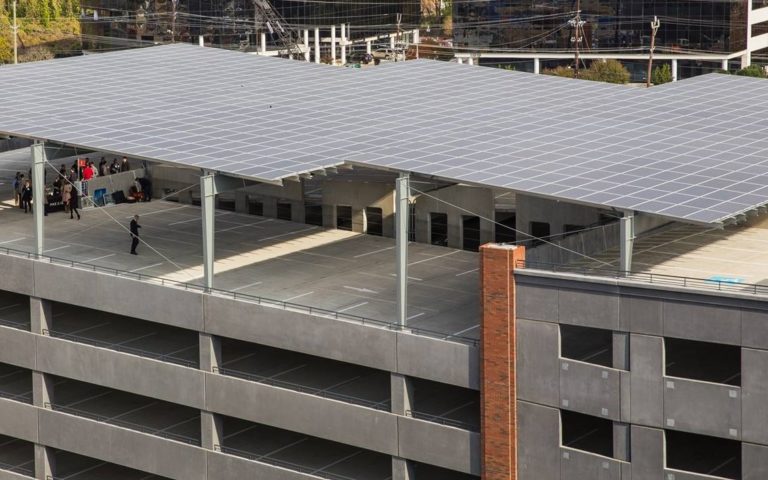On July 28, 2020, Asheville City Council approved the construction of onsite solar systems at five (5) City facilities. The five Asheville City sites are Wall Street Parking Deck, Burton Street Community Center, Shiloh Recreation Center, Fire Station 10 and Fire Station 11.
Collectively, this project will install a combined total of 259 kW of solar photovoltaic energy on City facilities. Construction is expected to occur sometime between September 2020 – February 2021. This is one more step towards the City’s 100% renewable energy goal.
This project is a joint venture between Buncombe County, A-B Tech, Asheville City Schools and Buncombe County Schools. On July 21, 2020, the Buncombe County Commission voted unanimously to issue debt service to fund the installation of 41 additional solar systems at various County and school locations. The project, including all agencies, totals 46 sites and will result in the installation of an estimated 7 MW of clean, renewable energy. All projects will be installed by Asheville-based company M.B Haynes.
All of the energy generated from these installations will be used onsite through a net-metered agreement. The Wall Street Parking Garage will also have a sell-all system (also installed at the Asheville Transit Station). The City expects these solar installations to come online by February 2021.
Definitions
Net energy metering: This is available to customers who generate their own power with renewable energy sources, such as rooftop solar panels. Customers receive a bill credit for supplying excess electricity to utility companies. That clean energy is passed along onto the grid for other customers to use.
Sell-all system: The customer buys energy from the provider and the solar array is separately metered. The energy generated by the solar array is collected through the separate meter and goes to the utility company. The utility then mails the provider a check for the electricity generated during that billing period.
More information
Please check with the project page for updates on this exciting project.
Buncombe County issued a press release for this project with information as well.
